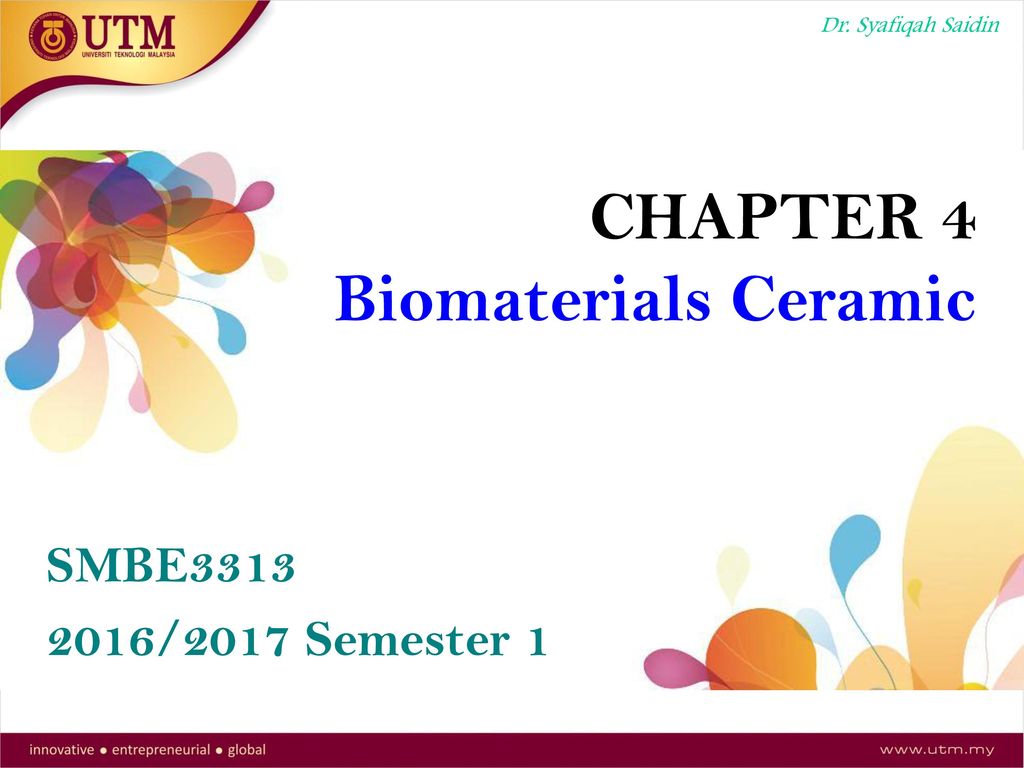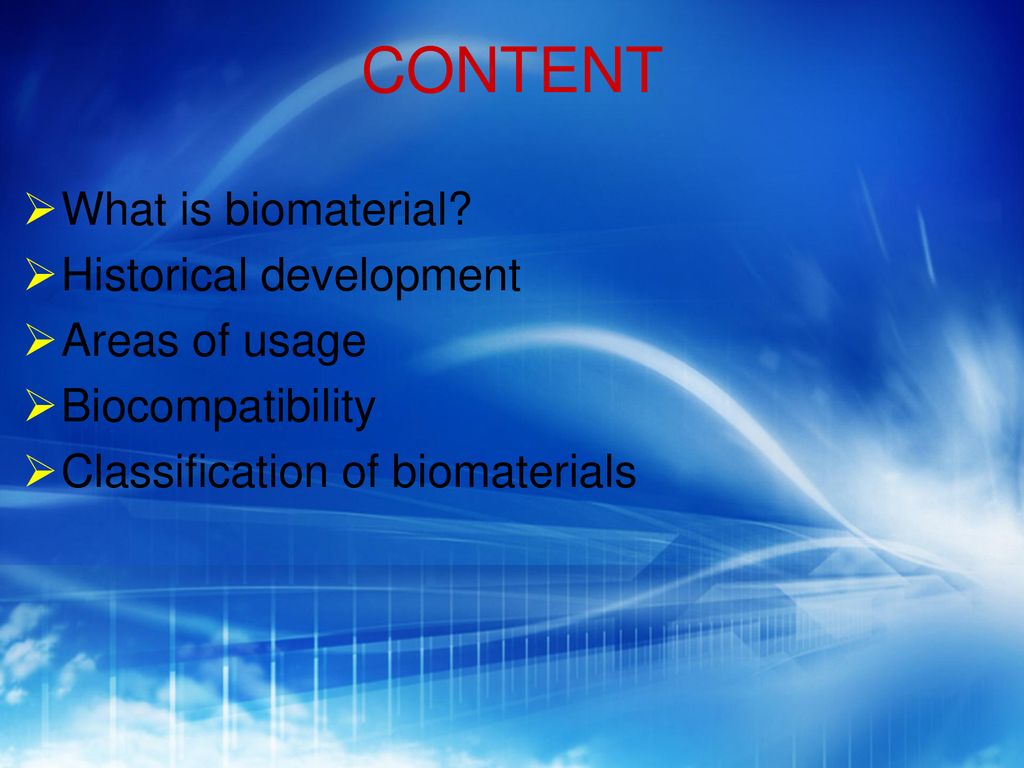They do not create strong biologically relevant interfaces with bones but they do promote strong adhesions to bones 3 the main applications of ceramic biomaterials include.
Ceramic biomaterials ppt.
Bioceramics and bioglasses are ceramic materials that are biocompatible.
Joint tissue replacement metal coating to improve biocompatibility.
Ceramic biomaterials are commonly used in bone surgery but are not effective in the treatment of large bone defects and especially in load bearing applications for which there are currently no satisfactory clinical solutions.
Bioceramics range in biocompatibility from the ceramic oxides which are inert in the body to the other extreme of resorbable materials which are eventually replaced by the body after they have assisted repair bioceramics are used in many types of medical procedures.
Ceramic biomaterials also stimulate bone growth and have low friction coefficients.
Bioinert ceramics such as alumina and zirconia have excellent mechanical properties for load bearing applications while bioactive glasses and ceramics have the potential for osteoconduction.
Ceramic biomaterials bioceramics the class of ceramics used for repair and replacement of diseased and damaged parts of the musculoskeletal system are referr slideshare uses cookies to improve functionality and performance and to provide you with relevant advertising.
Ceramic biomaterials have been widely used in biological applications as orthopaedic and dental implants and porous scaffolds for tissue engineering.
Biomaterials have become a fashionable and very active area of research and development in materials science and engineering mse worldwide.
The mechanical properties and biodegradability of bioceramics and the physiology of bone healing which account for.





























